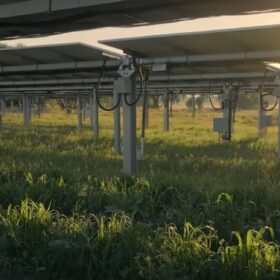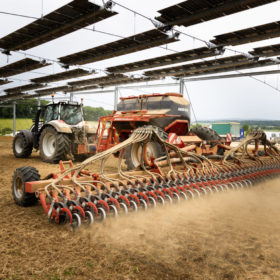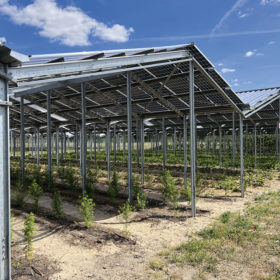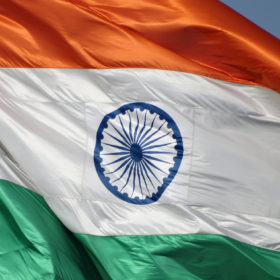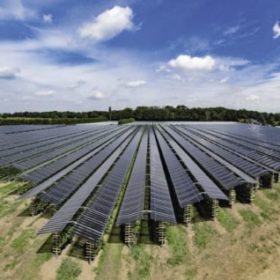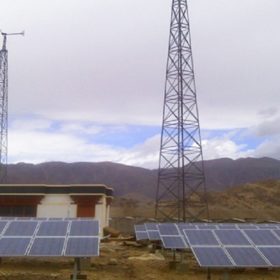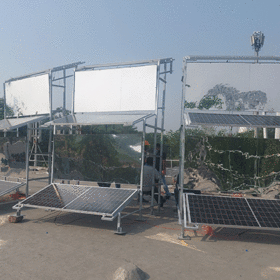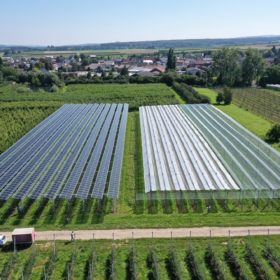Agrivoltaics market valued at $9.3 billion
The global agrivoltaics market is pegged at a 10.1% annual growth rate, according to a research note by Allied Analytics.
Agrivoltaics for arable crops
French developer TSE has commissioned its first agrivoltaic pilot project in northeastern France. The 2.4 MW installation spans 3 hectares and is installed on arable land devoted to the cultivation of soya, wheat, rye, barley, and rapeseed.
The long read: Farming the southern sun
Sunfarming is taking the lead when it comes to agriPV project development and investment in Germany. And in South Africa, Sunfarming’s Food and Energy and the Food Education Energy Development (FEED) program has developed two unique concepts through which it can share its agriPV expertise. pv magazine sat down with Sunfarming director of international projects, Edith Brasche, to talk about the company’s South African projects.
Mobile agrivoltaic system from the Netherlands
Created by a Dutch group of companies and research institutions, the mobile solar system may also be combined with an electrolyzer for hydrogen generation. Two prototypes are currently being tested by a farmer and a research institute in the Netherlands.
Solar power generation for EV charging far more land-efficient than cultivation for ethanol blending
A new report by IEEFA proposes enhancing India’s electric vehicle (EV) adoption strategy as an alternative to further promotion of blended fuel, given the land-use efficiency gap between renewable energy generation for EV charging and cultivation for ethanol blending in fuels. Matching the distance driven by electric vehicles (EVs) charged from one hectare of solar generation would require ethanol derived from up to 251 hectares of sugar cane or 187 hectares of maize, it estimated.
SECI tenders 5MW agrivoltaics plant on saffron farm in Jammu & Kashmir
Bidders have until April 19 to lodge their interest in setting up a 5MW (AC) grid-connected agrivoltaic plant combining solar with saffron farming in the Pulwama district.
MSEDCL tenders 445MW of distributed solar under PM KUSUM
March 17 is the deadline to bid for setting up grid-connected solar power plants in sizes of 0.5MW to 2MW on uncultivable land for selling the power to the State Discom.
Portable, space-saving solar towers
Researchers at the Indian Institute of Technology Delhi have developed solar towers that can be moved from one place to another and can generate 20-30% more power while requiring only 50-60% space compared to conventional mounting setups.
The case for agrivoltaics in India
Given 60% of India’s land area is farmed, agrivoltaics (pairing solar with farming) holds special promise for the nation to accelerate its transition to clean energy. However, the roll-out of agrivoltaics in India cannot proceed without addressing the various policy and regulatory challenges.
Agrivoltaics to protect crops from heavy rainfall
BayWa r.e. and the Fraunhofer Institute for Solar Energy Systems ISE have built a 258 kW agrivoltaic system that hosts apple cultivation under four different crop protection systems. The system utilizes agrivoltaic technology with permanent, light-permeable PV modules that block rain, and tracking PV module tech that blocks rain only if necessary.
